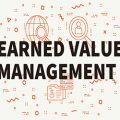
Love it or hate it, the measuring stick for a project manager is often their ability to keep projects on time and under budget.
Thankfully, project management theory provides us with a fantastic tool to keep us on target. But it has to be used correctly. Like a software tool, if you are not trained to use it it’s just a bunch of numbers. Once the technique is learned, however, it can be applied mechanically to make project control virtually effortless.
The earned value method is the standard for project control. Although there is much more to project management than earned value, it holds the secret to strong project management.
But that doesn’t mean it’s hard. So roll up your sleeves, budget about an hour, and I’ll bet you’ll agree with me that it isn’t as hard as it first looks.
- Introduction
How it works, what you need to do, how to set it up on a project and what prerequisite information you need to gather. - Gather Work Performance Information
Once per specified reporting period, the project manager needs to gather three pieces of information about the project. Learn those three pieces of information and how to gather them. - Determine Schedule Status
Are you ahead or behind schedule? The earned value method will tell you right to the current hour. The early warning signal is absolutely priceless. - Determine Cost Status
Are you over or under budget? The earned value method will tell you how much, in any currency, in real time. Then if you can deal with the small variances before they get big, you will have slain most of your project dragons. - Forecasting
Sometimes it’s not enough to know where you are right now, you need to know where you will end up at the current pace. Are you going to finish the project over budget or behind schedule? Do you need to make changes to adjust? These questions can be answered with a few very important earned value calculations. - Reporting
There are a myriad of ways to report earned value results. Small projects need a reporting method that’s not too onerous, while large projects can afford to produce custom forms for different stakeholders. Each stakeholder will have their preferences regarding which metrics are valuable to them. Also, each metric will have varying levels of importance in different industries. - Example
We get it, there are alot of numbers and formulas. We’ll walk you through a simple project to make sure you know how to use the method and can apply it to real projects.
Good luck, and leave me a comment if you have any questions.






